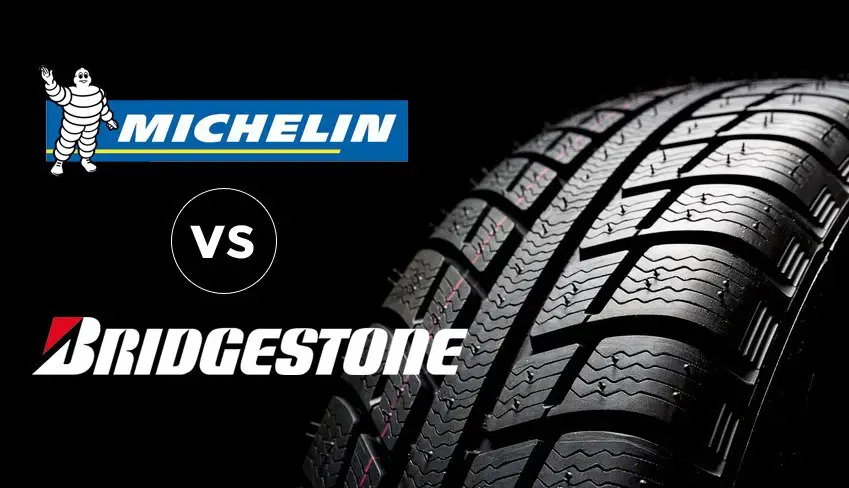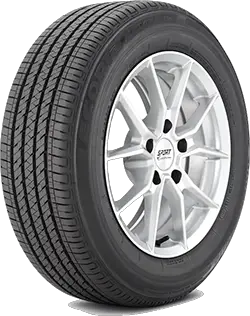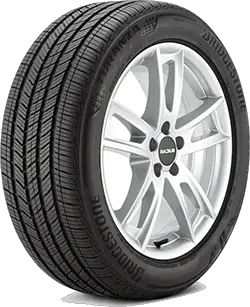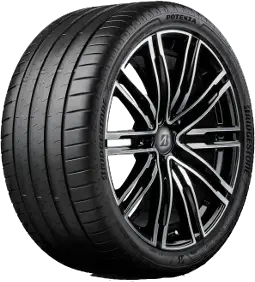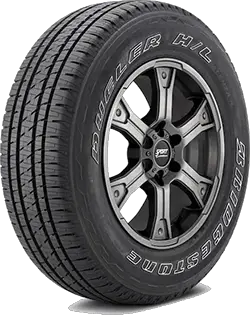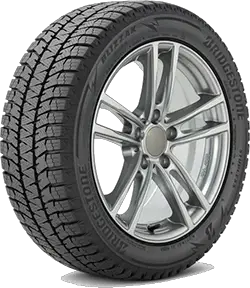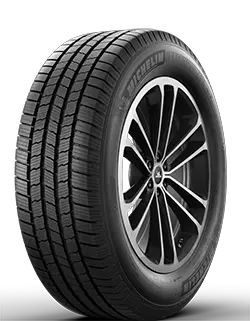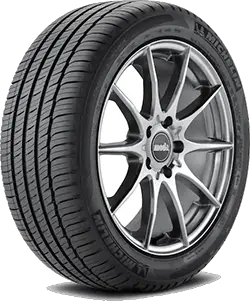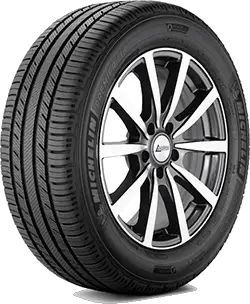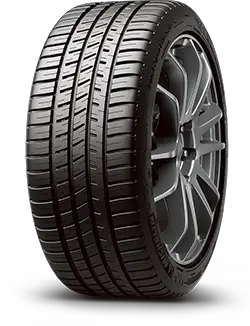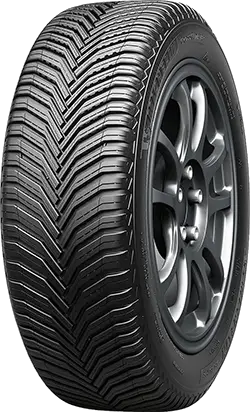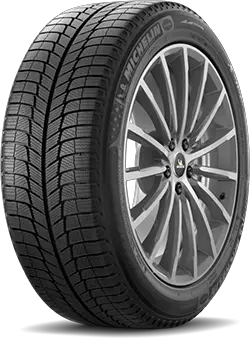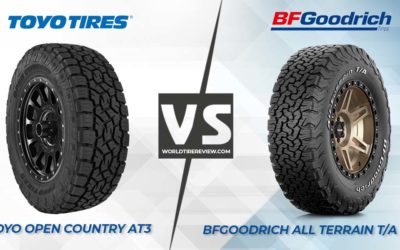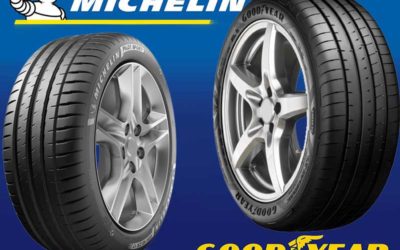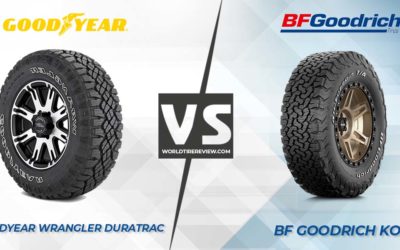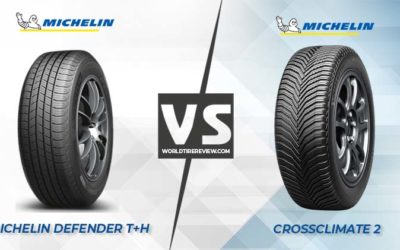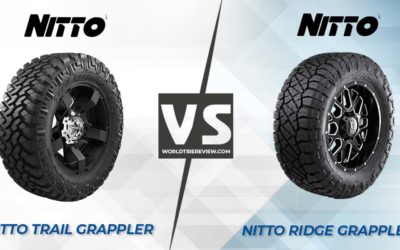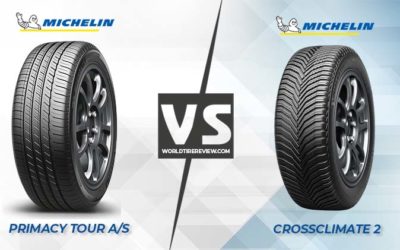When it comes to tire manufacturers, we can’t exclude the debate between the two top-tier giants, Bridgestone and Michelin. They’re both famous for producing economic, efficient, and high-performing tires for cars, trucks, motorbikes, and more.
However, it’s critical that you consider which tire brand above is better for your vehicle. To make the right decision, you need to compare them in terms of their tire performance, durability, safety, comfort, and so on.
If you’re clueless, don’t worry since this article is your savior. We’ll help you determine whether Bridgestone or Michelin is worth your money the most.
General Information About Two Brands
Bridgestone Overview – World’s Largest Tire And Rubber Company

Bridgestone is a Japan-based manufacturer which produces and sells rubber and tires worldwide. Interestingly, the brand’s name is from the founder’s name, Shojiro Ishibashi, which means “bridge stone” in English. It was founded in 1931 in Fukuoka, Japan.
Bridgestone’s product line extends beyond tires to include a variety of automobile parts and accessories. It also deals in a wide range of other items and services. They include journalistic and commercial services and sports equipment like golf clubs.
The early beginnings of this Japanese tire corporation can be traced back to the sale of Japanese footwear. Rubber-soled tabi was a big moneymaker for Ishibashi. His rubber firm was doing well. Therefore he had plans for an expansion.
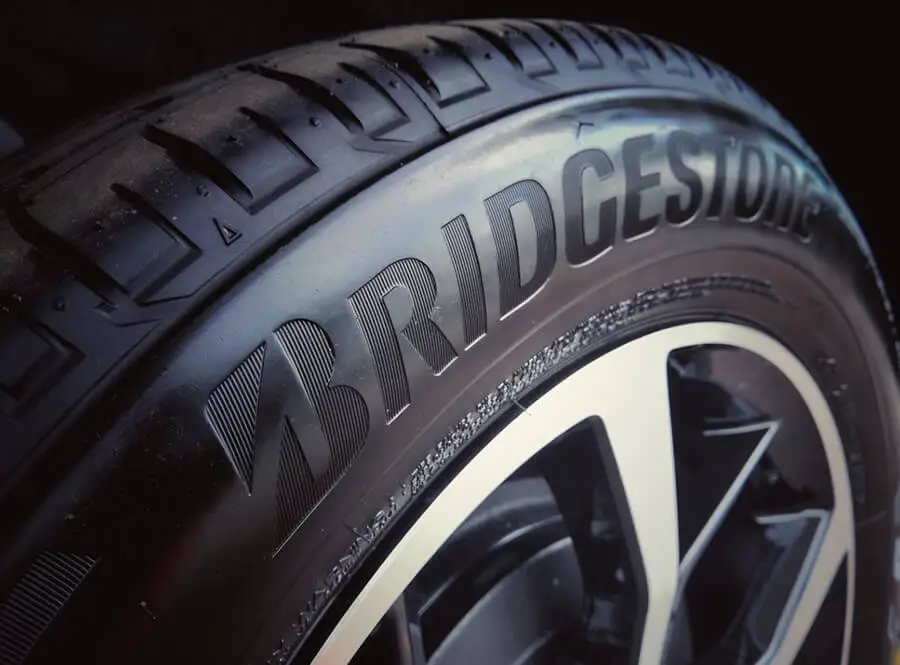
Amazingly, the tire industry did not exist at that time. After years of research and development, Ishibani established Bridgestone Ltd. He renamed it Bridgestone Corporation in 1984.
Acquisitions and mergers were the results of Ishibani’s goal for growth and expansion. One of Bridgestone’s most major buyouts was the Firestone Tire & Rubber Company. Bridgestone and Firestone joined in 1988. The merger made this Japan-based manufacturer the world’s largest tire maker.
Michelin Overview – Top-Selling Tire Brand Worldwide

Michelin is the world-leading tire and rubber manufacturer. They produce a variety of tires for planes, cars, large trucks, motorbikes, and bikes.
Innovative services and solutions for friendly automobiles were also important fields of this corporation. On the other hand, Michelin has a considerably longer history than Bridgestone.
The Michelin brothers, André and Édouard, started a rubber ball and farm equipment manufacturing in 1832. Until 1889, they came across a special event. It helped them grasp the significance of bicycle tires.
Particularly, a bicycle with a broken pneumatic tire arrived at their factory. The big issue was that its tire adhered to the rim, which took the brothers hours to split them apart. It led to a striking idea that the tire could split from the rim and be a stand-alone unit.
As a result, the brothers produced the world’s first pneumatic tire. Michelin indeed was the first to develop contemporary ones. Other major inventions have been credited to this French firm.
A design that is still in widespread use today, the run-flat tire, was invented by the Michelin brothers in 1934. These men also developed radar tires, which enhanced road safety.
In 1989, Michelin acquired B.F. Goodrich Company and Uniroyal, Inc., two major purchases. It is now present in 171 countries and employs 5,000 agents, with a total market share of 14 percent.
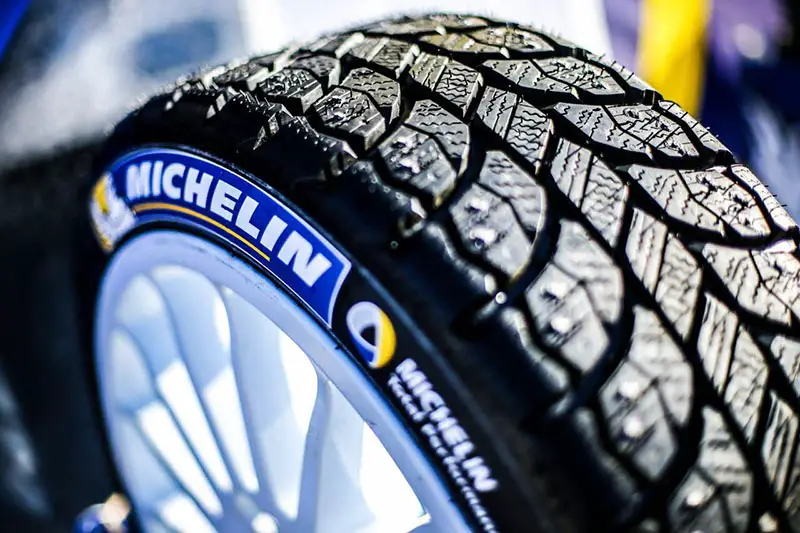
Interestingly, Michelin is also known for the Michelin Guide. It awards stars to the best restaurants in the world. The Michelin brothers compiled it in the early 1900s. This guide is to assist traveling drivers in their quest for dining establishments.
Michelin vs Bridgestone: A Comprehensive Comparison
Performance and Safety
Be it Bridgestone or Michelin, they are the most efficient premium tire brands. However, when it comes to performance and safety, there’s a bit of difference between them. Take a more detailed look to find out who’s the winner in each weather condition.
Wet Performance
The two brands are good choices for wet conditions. They aren’t the best, but they’re still fantastic anyway.
For the Japanese firm, no traction is lost. They don’t make cornering difficult or increase your braking distance. Some drivers say these tires outperform dry tarmac in rainy conditions.
If you’re not used to driving on wet roads, the tires’ slickness will improve the experience. It does not state that they are less safe; in fact, they are more alert.
Customers also have satisfied feedback on the wet-road performance of the Michelin. They grip better in the rain since the tread gets wider with wear. Besides, it also benefits from the slick roads having less of a surface to rub against.
Compounds in the wheels’ rubber, particularly sunflower oil, cause a lot of friction. The softness of the wheels is able to maintain the gripping quality, thanks to the oil.
Hence, they’re even in this Bridgestone vs Michelin wet performance round. Both of them do a great job.
Dry Performance
Regarding driving on dry roads, the Japanese candidate appears to be less responsive to your touch. In other words, it seems awkward to handle. Fortunately, the uncomfortable handling goes away after a while of stoking the flames.
On the other hand, the French rubbers perform admirably on dry roads. Their reactivity is a lot better than the Japanese ones. The tires move in the appropriate direction with the lightest touch and correspondingly speed up and slow down.
Moreover, the tread makes better braking performance. It does contribute to the luxury quality of these tires that you won’t get in other brands.
Apparently, the French firm is the winner in this Michelin vs. Bridgestone round. It overwhelms the Japanese company in dry performance since it allows for easier handling.
Winter Performance
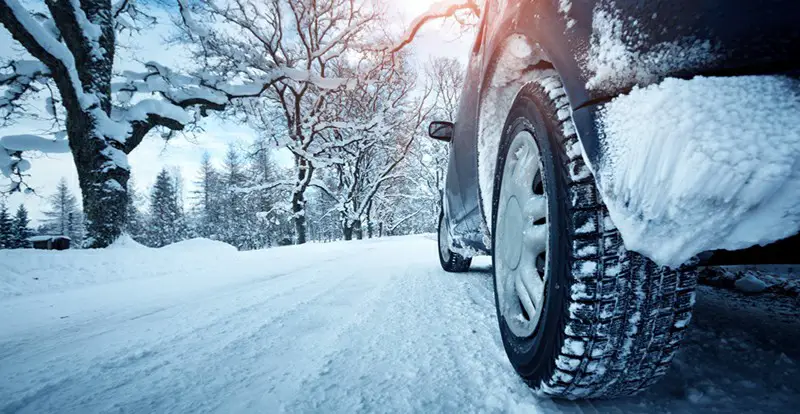
Bridgestone’s often regarded as the snow tire by customers. The grippy treads can handle even light and significant snowfall. They stick to ice better than any other brands the customers have used.
Products from Bridgestone are worth considering if you live in snowy and slippery conditions. Drivers in heavy snowfall locations should opt for winter tires over all-season ones. It’s for their own safety.
In opposition, the French one may be all-season type, but they aren’t snow-ready. Customers state that the tires eventually fail and become too firm to function properly. As a result, they are unable to manage deep snow.
Thus, for winter performance, the Japanese manufacturer takes the lead over its rival.
Durability and Warranty
In this round of the Bridgestone and Michelin tires matchup, both place a high value on long-term usability. They also make use of cutting-edge, fuel-saving technology. For the owner, they not only save money but also reduce pollutants.
However, there’s a difference between the warranty policy of these two corporations. The Japan-based company offers two types of warranties: a trendline warranty that lasts for three years and a three-year type that is still valid after 65,000 miles. Meanwhile, the other candidate only covers 60,000 miles of tread life.
Hence, if you’re looking for a brand that gives you a better guarantee, go for the Japanese one.
Comfort and Noise
The Bridgestone takes the stress of potholes or debris without disturbing you. Customers don’t appear to be blown away by the comfort level yet.
On the other hand, the Michelin provides a comfortable ride, thanks to its soft and supple tires. It has excellent shock absorption when driving over minor debris or potholes.
While a tire’s comfort comes in the form of its noise level, no one wants a growl to interrupt their cruising ride. It’s where the Japanese tire products fail the customers again. In terms of noise, they’re a little louder than other companies’ touring tires.
Similarly, the French lines do not produce a quiet ride. Even though they don’t make a lot of noise, rattle, or roar, a faint hum may appear. However, with the wind or the car radio, consumers might not notice it.
In this round, Michelin has an edge over the other. They bring more comfortable and less noisy experiences to customers compared to Bridgestone.
Price
There isn’t much of a difference in pricing between two brands. Both of them are some of the priciest brands out there.
They spend a lot of money on R&D. That’s why you don’t only get brand panache. You’re also approaching a set of premium goods with better performance and technology.
If you wish to save a little amount of money then, Bridgestone is a better choice. However, Michelin also offers a wide range of products at different prices for their customers to choose from.
Bridgestone vs Michelin: Tires Categories
Bridgestone Tires
Passenger-Car Tires
Are Bridgestone tires good in terms of passenger car lines? The answer is yes. They have one of the broadest car tire lines in the industry. These types all have a high level of performance, comfort, as well as long-term durability.
Ecopia. Passenger and touring products for drivers of compact automobiles, minivans, and sedans. They give up a little traction in their performance. It’s an exchange for increased endurance and reduced fuel consumption. Compared to other lines, Ecopia is quiet and less expensive.
Featured Tire: Bridgestone Ecopia EP422 Plus
| Section width: 225 Millimeters Aspect Ratio: 65.0 Rim Diameter: 17 inches Load index rating: 102.0 Speed rating: H Tread depth: 10 32nds UTQG: 600 A A |
|
Turanza. This type is for touring and grand-touring tires. Compared to Ecopia, Turanza has improved high-speed stability and grip. Additionally, it might be comfortable while still maintaining a similar level of durability.
Featured Tire: Bridgestone Turanza QuietTrack
| Key Feature | |
| Tire Size | 16″, 17″, 18″, 19″ and 20″. |
| Price Range | $149.00 to $361.00 |
| Ratings | (6) |
Potenza. Superior handling, great grip, and superb stability are all hallmarks of this line. If you have a high-performance vehicle, Potenza is for you.
Featured Tire: Bridgestone POTENZA Sport
| Key Feature | |
| Tire Size | 15″, 16″, 17″, 18″, 19″ and 20″. |
| Price Range | $131.00 to $256.00 |
| Ratings | (6) |
Dueler. This line is quite similar to the Turanza. But they are geared toward owners of crossovers, SUVs, and trucks.
Featured Tire: Bridgestone Dueler H/L Alenza Plus
| Sizes Available: 15” to 20” Speed Rating: T Mileage Warranty: 80000 miles Rim Width Range: 6” to 9” Overall Diameter: 28.3” to 32” Revs Per Mile: 637 to 722 Max Load Capacity: 2,469 lbs Tread Depth: 12/32” Max Inflation Pressure: 44 psi |
|
(9) |
|
Blizzak. It’s for winter tires. In most winter performance test comparisons, Blizzak comes out on top.
Featured Tire: Bridgestone Blizzak WS90
| Sizes Available: 14” to 20” Speed Rating: Q, H, V, W, Y Mileage Warranty: N/A Rim Width Range: 5” to 10” Overall Diameter: 23” to 28.3” Revs Per Mile: 736 to 905 Max Load Capacity: 1,653 lbs Tread Depth: 11/32” Max Inflation Pressure: 44 psi |
|
(5) |
|
View more Bridgestone tire reviews at here
Motorcycle Tires
A wide variety of motorcycle tires are available at this Japan tire maker. These include performance products for the street and off-road. They also support gravel road and urban driving tires.
Commercial Tires
The company also makes significant investments in commercial lines. They have products for vans, semi-trucks, and buses.
Michelin Tires
Passenger-Car Tires
It appears that Michelin’s tire line is more varied than the previous one. Tires for passenger cars are available in a wide variety of sizes. Durability, safe traction, and high comfort levels are all promised by these products.
Defender. This line includes touring and highway products. They are noted for their long tread life and durability. They also perform great traction in both dry and rainy weather, with high levels of comfort.
Featured Tire: Michelin Defender LTX M/S
| Sizes Available: 13” to 20” Speed Rating: T, H Mileage Warranty: 70000 mile Rim Width Range: 5.5” to 11” Overall Diameter: 22.6” to 30” Revs Per Mile: 699 to 913 Max Load Capacity: 1,356 lbs Tread Depth: 10/32” Max Inflation Pressure: 44 ps |
|
(11) |
|
Primacy. It’s for touring and grand touring models. Sedan, coupe, minivan, and crossover drivers should use Primacy. They provide better cornering traction both on dry and rainy roads. Besides being quiet and comfy, Primacy is also long-lasting.
| Season: All Season Size: 16″ to 20″ Construction: Radial Speed Index: H & W Mileage Warranty: 55,000 miles |
|
(5) |
|
Premier. The line is best suited to cars such as the Toyota Camry or Honda Accord. They’re also great for minivans, crossovers, SUVs, or trucks.
Featured Tire: Michelin Premier LTX
| Sizes Available: 15” to 20” Speed Rating: R, S, Q, T Mileage Warranty: 50000 mile Rim Width Range: 5.5” to 11” Overall Diameter: 27” to 36.5” Revs Per Mile: 569 to 751 Max Load Capacity: 2,755 lbs Tread Depth: 15/32” Max Inflation Pressure: 50 psi |
|
(6) |
|
Pilot Sport. This merchandise is suitable for sedans, coupes, SUVs, and pickup. They tend to perform well in both on-track and off-track comparisons.
Featured Tire: Michelin Pilot Sport AS 3+
| Key Feature | |
| Tire Size | 16″, 17″, 18″, 19″, 20″, 21″, 22″ |
| Price Range | $128.22 – $362.47 |
| Ratings | |
CrossClimate. Family of all-season tires with an emphasis on winter performance.
Featured Tire: Michelin CrossClimate 2
| Key Feature | |
| Tire Size | 16″, 17″, 18″, 19″ and 20″. |
| Price Range | $147.99 to $278.99 |
| Ratings | (8) |
Latitude and Alpin. This line has been through its paces in the most arduous winter conditions. They have proven to be reliable on snow and ice.
Featured Tire: Michelin X-Ice Xi3
| Key Feature | |
| Tire Size | 14″, 15″, 16″, 17″, 18″ and 19″. |
| Price Range | $56.82 – $235.91 |
| Ratings | (6) |
View more Michelin tire reviews at here
Motorcycle Tires
How about the Michelin and Bridgestone tires for motorcycles? Amazingly, the France-based manufacturer is the most popular motorcycle tire brand. It has more diverse types than Bridgestone.
Tires for cruisers, Enduro, MX, Roadster are all available from the French firm. They also support Sport, Sport Touring, Trials, and Scooter rubber products. There’s even a line of tires designed specifically for electric bicycles.
Commercial Tires
Similar to the Japanese firm, Michelin produces tires for vans, semi-trucks, and buses. They are noted for their long-term durability and performance. Customers also appreciate their comfort and ease of use.
Who is The Winner? Bridgestone or Michelin
There’s no doubt that these two brands have been consistently on top of the tire industry for years. They provide the best products for many types of customers around the world. Here’s a short conclusion for you.
Opt for the Michelin if you want:
- Better dry and wet performance
- Better comfort and less noise
- Diverse vehicle tires
Go with the Bridgestone if you’re keen on:
- A slightly lower price
- Better warranty policy
- Better winter performance.

